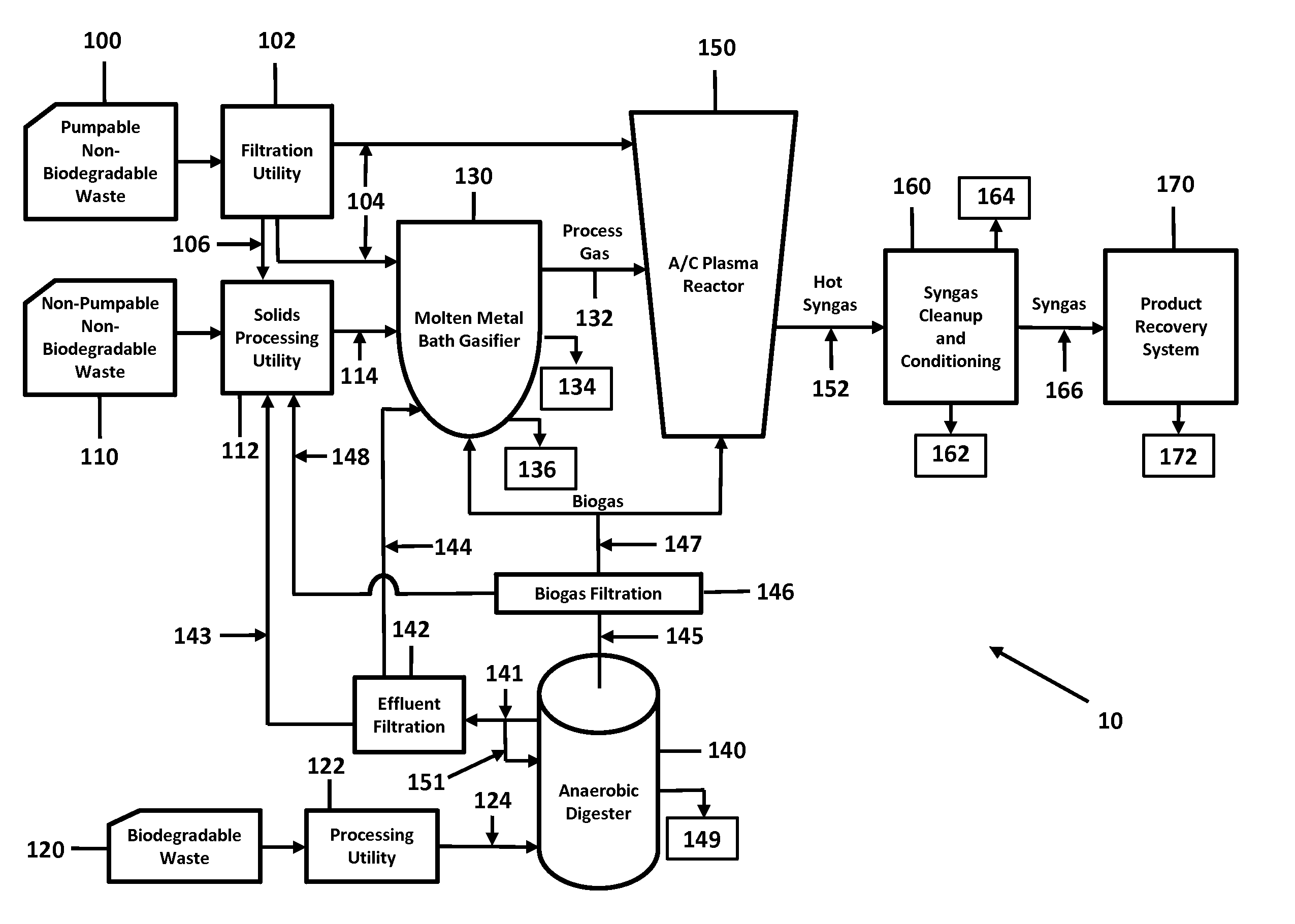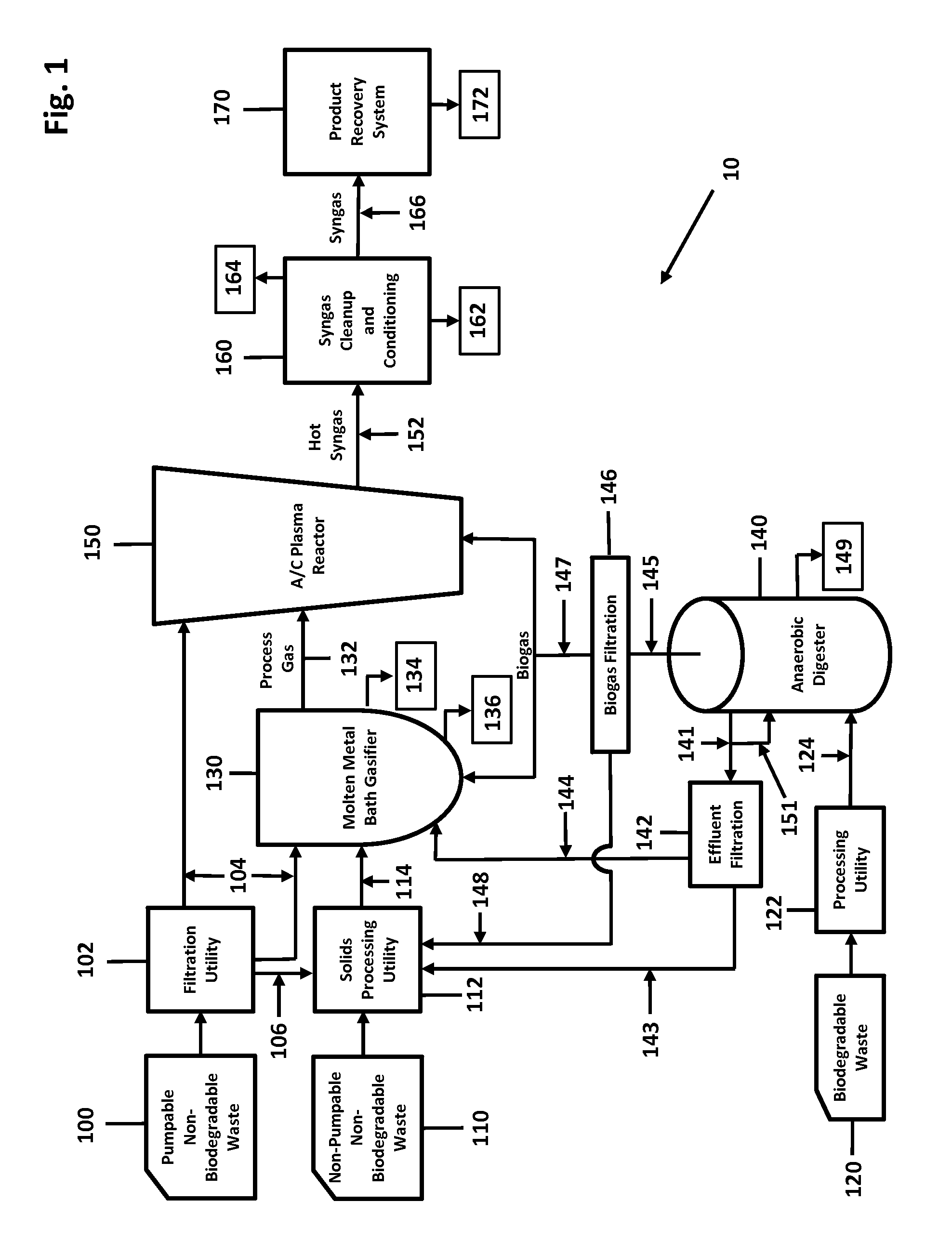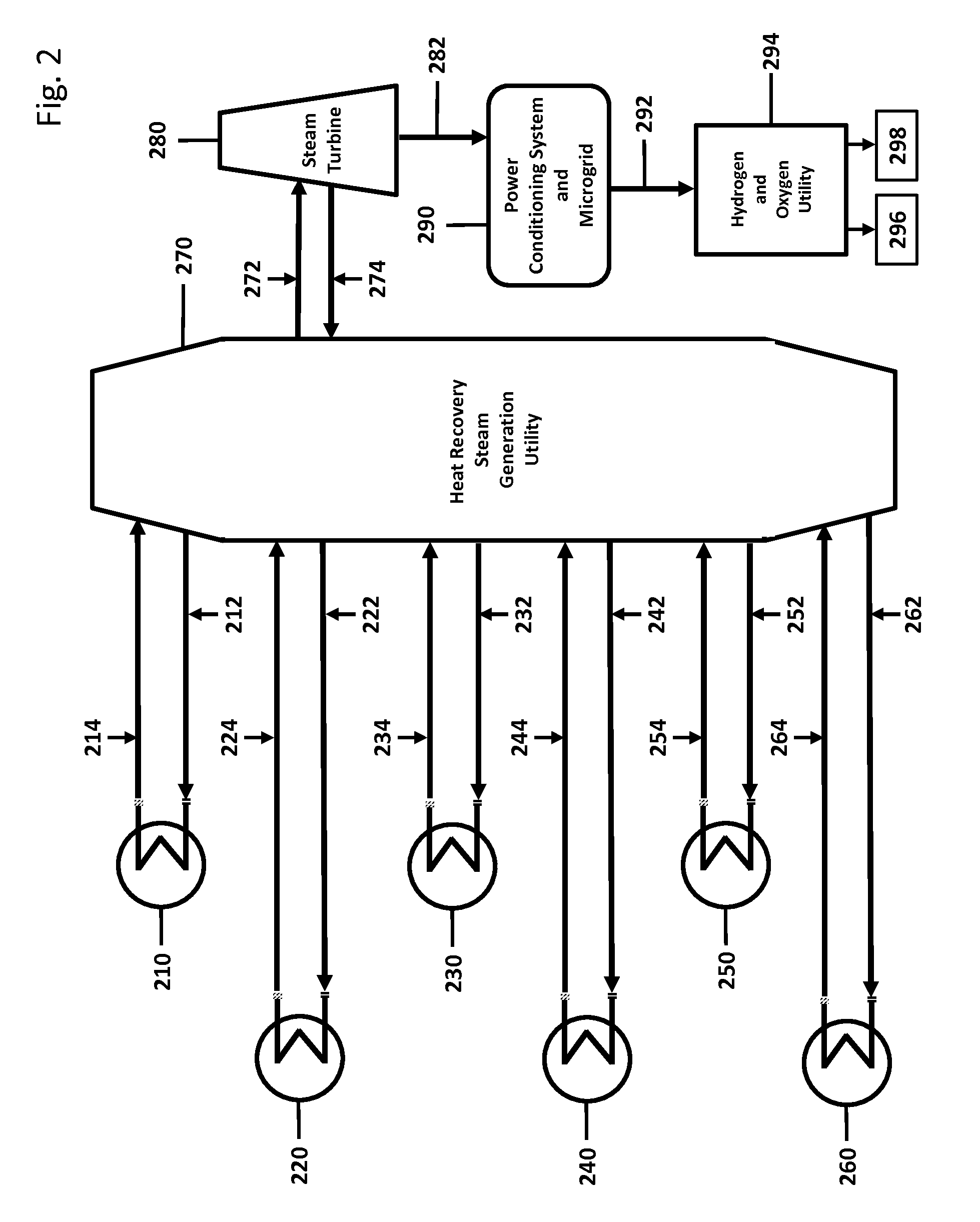System and method for producing a consistent quality syngas from diverse waste materials with heat recovery based power generation, and renewable hydrogen co-production
a technology of heat recovery based power generation and waste materials, which is applied in the direction of combined combustion mitigation, molten salt/metal gasification, sustainable manufacturing/processing, etc., can solve the problems of reducing the quality of waste-derived products, reducing the efficiency of waste-derived products, and reducing the cost of systems, so as to achieve the effect of processing more effectively and safely
- Summary
- Abstract
- Description
- Claims
- Application Information
AI Technical Summary
Benefits of technology
Problems solved by technology
Method used
Image
Examples
Embodiment Construction
[0095]Referring now to FIG. 1, the presently preferred embodiment of the inventive system 10 begins with the acceptance of heterogeneous waste materials 100, 110, 120, which exclude, for example, Universal Wastes (see 40 CFR 273); explosives and munitions; radioactive materials; concentrated halogens and heavy metals. Waste products 100, 110, 120 received are identified (via electronic code, e.g., barcode, Quick Response Code, RFID, etc.) manually separated into three major categories for initial processing: 1) pumpable non-biodegradables 100; 2) non-pumpable solid / semi-solid materials, and any other non-liquid waste or secondary materials 110; and 3) biodegradables (e.g., plant, animal, and / or food industry waste) 120.
[0096]Biodegradable waste 120 is mechanically processed (shredding, grinding, milling, or other size reduction processes) by a biodegradables waste processing utility 122 to which water or other liquids are added as needed to produce a pumpable slurry 124 for input in...
PUM
| Property | Measurement | Unit |
|---|---|---|
| temperature | aaaaa | aaaaa |
| temperature | aaaaa | aaaaa |
| temperature | aaaaa | aaaaa |
Abstract
Description
Claims
Application Information
 Login to View More
Login to View More - R&D
- Intellectual Property
- Life Sciences
- Materials
- Tech Scout
- Unparalleled Data Quality
- Higher Quality Content
- 60% Fewer Hallucinations
Browse by: Latest US Patents, China's latest patents, Technical Efficacy Thesaurus, Application Domain, Technology Topic, Popular Technical Reports.
© 2025 PatSnap. All rights reserved.Legal|Privacy policy|Modern Slavery Act Transparency Statement|Sitemap|About US| Contact US: help@patsnap.com



